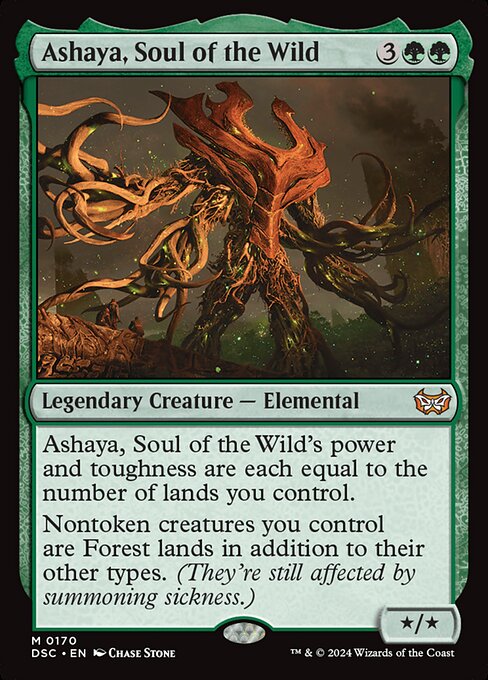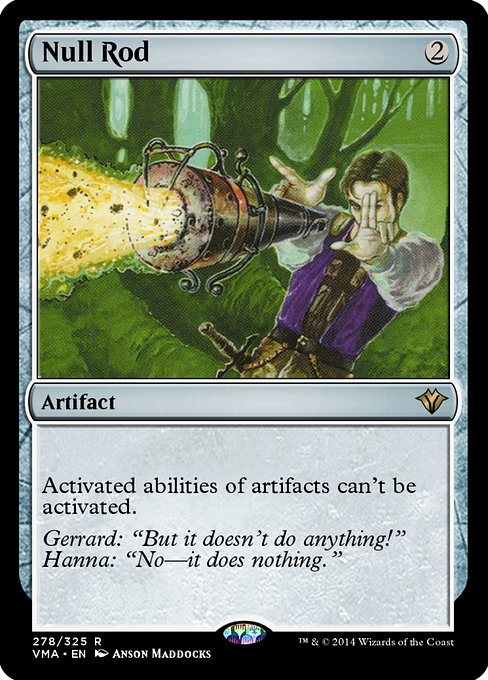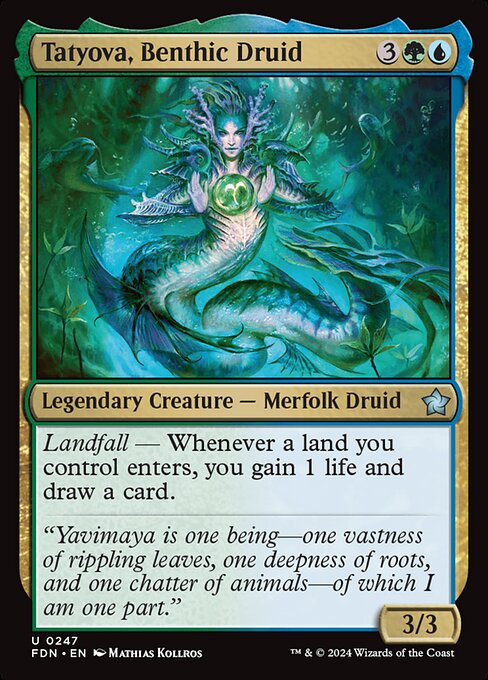My approach to cEDH is to learn all my lessons the hard way. It’s normal to start from a proven list, play it to understand why it’s good, why it’s built the way it is. Maybe you figure out some changes that work for the way you play it. I have more fun going the other way. Start with my intuitions, build a deck around them, play it to test, then log the lessons and improve the deck or move on to the next idea.
For example, Hidetsugu and Kairi couldn’t play a fair game due to not having enough natural card advantage. This is largely due to not having a commander which could participate in the game before the end. Tymna, the Weaver and Thrasios, Triton Hero Stax predictably suffered from not being able to end a game. But more specifically, I think it suffered from stax pieces not scaling well. The first one or two slow the game down until someone can answer them. But with more of them, they don’t slow the game down much further. Someone only needs to answer the one that matters to them, or someone can remove them all at once. Slogurk, the Overslime is fun, but a bit slow and fragile–very bad against graveyard hate or library searching hate.
So now I want to try Zimone and Dina. Partially the pattern here is “think of/play with a legend I think is cool, try to build a cEDH deck around it,” but partially this is an attempt to learn from the lessons above.
cEDH Version
My approach to Zimone and Dina has a lot in common with my approach to Slogurk, and I even play Slogurk in the 99, but it has a few important differences. First, because Zimone has a tap ability, I can make good use of Quirion Ranger. This means I can play it without it being a dead card most of the time, which means I can play Ashaya, Soul of the Wild for the Quirion Ranger combo.

Note this combo needs a creature which taps for 2+ mana to generate infinite mana, which my deck currently isn’t playing. But, it generates infinite landfall with just the two of them, and I have a lot of ways to take advantage of that. Incidentally, even without Ashaya, Quirion Ranger is kinda busted with Zimone and Dina, especially in conjunction with Bloodghast. As you get to activate Zimone and Dina every turn, picking up and replaying the same forest and sacrificing the same Bloodghast. I still also have the Kodama of the East Tree+landfall creature that makes an object+bounceland combo from my Slogurk deck.
I’m playing Bloodghast, Dogged Detective, and Master of Death because I want creatures that I can repeatedly sacrifice, but that also work with discard effects–I’m playing Rona, Herald of Invasion, Vohar, Vodalian Desecrator, Teferi, Master of Time, and Ledger Shredder. These give additional draws for Zimone and Dina while taking advantage of the recurring creatures and playing well with Slogurk.

They also fuel a tiny reanimation theme–I want Entomb to find Master of Death or Bloodghast, but I’m also playing Reanimate, and I have Razaketh, the Foulblooded and Kodama of the East Tree as reanimation targets, but I’d also like to find room for Nezahal, Primal Tide.
I’m on the no creature or artifact mana sources plan from Slogurk, using Collector Ouphe and Null Rod, as both decks really want their mana to come from lands specifically. This deck is only playing 38 lands, which I suspect is too few. However, all my spells feel important and I draw a lot of cards. My hope is that more cuts become clear after a few games, since I do think I’m short a few lands, but I don’t think I’ll get around to trying enough of these spells if I don’t start with them.

I can also prioritize Life from the Loam or Ramunap Excavator as tutor targets if I’m land light.
My hope is that this deck is better at closing a game than Slogurk or Tymna because I have a few more combos, and I get to play Demonic Tutor and Vampiric Tutor to help assemble them.
Most of the rest of this deck is pretty standard, or very similar to Slogurk. I’m excited about the amount of free creature removal I get access to with Deadly Rollick, Submerge, Snuff Out, and to some extent Snap, though Snap is primarily a combo piece with Eternal Witness and Gaea’s Cradle.
The full list is available and will be updated here.
Budget Version
There’s a local store which holds $50 budget competitive commander events, and I’ve been thinking about trying to play them. But after thinking so much about cEDH, it’s been tricky to wrap my head around how to expect budget to play. I suspect I prefer the play pattern of fully powered cEDH, because I think the free counterspells offer the primary dynamic that extends games in cEDH–you never know when it’s safe to try to go off because people don’t need mana to stop you, while if people can’t play free counterspells, you can reasonably safely go for a win anytime everyone’s tapped out. Basically I worry the budget hurts answers more than it hurts threats.
That said, I still want to try it, so I wanted to try to build a budget version of Zimone and Dina.
It’s tricky because it’s a lands deck, and those suffer a lot without fetches and Gaea’s Cradle or Minamo, School at Water’s Edge, etc, but I think it’s workable.
I started by price sorting my Zimone and Dina cEDH deck and cutting everything over $5. Then I added the good interactive spells from Pauper EDH like:
I was able to keep Kodama of the East Tree, Tireless Tracker, Tireless Provisioner, Scute Swarm, and bouncelands. I lost Gaea’s Cradle for the Snap+Witness combo, and I lost Ashaya. But I added Peregrine Drake with Displace and Ghostly Flicker and kept Eternal Witness and Timeless Witness. I lost Life from the Loam, so I’m playing more lands and cards like Rampant Growth. I lost Sylvan Library, but replaced it with Compost, and I got to keep Mystic Remora.

Reassembling Skeleton replaced Bloodghast, which is a pretty clean substitution.
In the end, I have a deck that I think looks pretty fun, so here’s the deeper breakdown of the budget deck in my usual “by class of cards” style.
Ramp:
- Arboreal Grazer
- Sakura-Tribe Scout
- Skyshroud Ranger
- Coiling Oracle
- Elvish Rejuvenator
- Springbloom Druid
- Tireless Provisioner
- Wood Elves
- Explore
- Farseek
- Rampant Growth
- Khalni Heart Expedition
- Myriad Landscape
Creatures are prioritized because I can sacrifice them to Zimone and Dina. I don’t want spells like Cultivate because they aren’t creatures, and I want to be casting Zimone and Dina with three mana.
Skyshroud Ranger and Sakura-Tribe Scout can function like Arboreal Grazer, giving me an extra land play and then being sacrificed to Zimone and Dina, but they’re also combo pieces with a bounceland and Retreat to Coralhelm.
Most of the above creatures are reasonable to sacrifice to Zimone and Dina, but I also play creatures that are designed for the role.
Fodder:
- Dogged Detective
- Elvish Visonary
- Reassembling Skeleton
- Wall of Blossoms
- Master of Death
- Argoth, Sanctum of Nature
- Khalni Garden
I’m usually hoping to discard Master of Death, but I can cast it in a pinch.
Zimone and Dina provide a lot of card advantage. But they need help finding enough lands to put into play to really get going. You never want to be entirely dependent on your commander, plus, the more card draw I have the more I can trigger their drain two ability, so I’m playing a lot of extra drawing.

Card Drawing:
- Rona, Herald of Invasion
- Vohar, Vodalian Desecrator
- Tireless Tracker
- Tatyova, Benthic Druid
- Brainstorm
- Mystic Remora
- Compost
Between the looting and the sacrificing, this deck is very good at filling its graveyard, so I want a lot of ways to get access to those cards.
Recursion:
- Shigeki, Jukai Visionary
- Eternal Witness
- Timeless Witness
- Colossal Skyturtle
- Slogurk, the Overslime
- Mystic Sanctuary
Shigeki, Jukai Visionary and Colossal Skyturtle can return each other and other cards to create a great engine for turning mana into interaction. The Witnesses can be reused with flickers or returned to my hand with Kogla, so this small package gives me a lot of recursion.
While I’m still skeptical of all-in combos like Thassa’s Oracle, I’ve started prioritizing low risk infinite combos pretty highly, and this deck plays several.
Combo Pieces:
- Quirion Ranger
- Scute Swarm (also a good source of fodder)
- Peregrine Drake
- Kodama of the East Tree
- Displace
- Ghostly Flicker
- Retreat to Coralhelm
- Crop Rotation
- Simic Growth Chamber
- Dimir Aqueduct
- Golgari Rot Farm
Finally, I need to be able to interact with my opponents.
Interaction:
- Collector Ouphe
- Kogla, the Titan Ape
- Dispel
- Nature’s Claim
- String of Disappearances
- Counterspell
- Disdainful Stroke
- Essence Scatter
- Memory Lapse
- Negate
- Resculpt
- Snap
- Tear Asunder
- Dream Fracture
- Bojuka Bog
This deck is playing a whopping 47 lands. On the one hand, that’s more than strictly necessary, but on the other hand, it means that Zimone and Dina should hit eight lands quickly, which seems pretty great. I’m really interested to play both versions of this deck to compare how different the different land counts feel. I suspect the right number for both is between these two numbers, but playing the extremes should give me a lot of information about whether it’s good to err toward too many or too few. It’s good to have a few clear ideas about what you’re looking to learn from any kind of experiment, and new decks definitely qualify.
Sam Black (any) is a former professional Magic player, longtime Magic writer, host of the Drafting Archetypes podcast, and Twitch streamer. Sam is also a Commander Cube enthusiast, and you can find Sam’s cube list here. For anything else, find Sam on Twitter: @SamuelHBlack.

